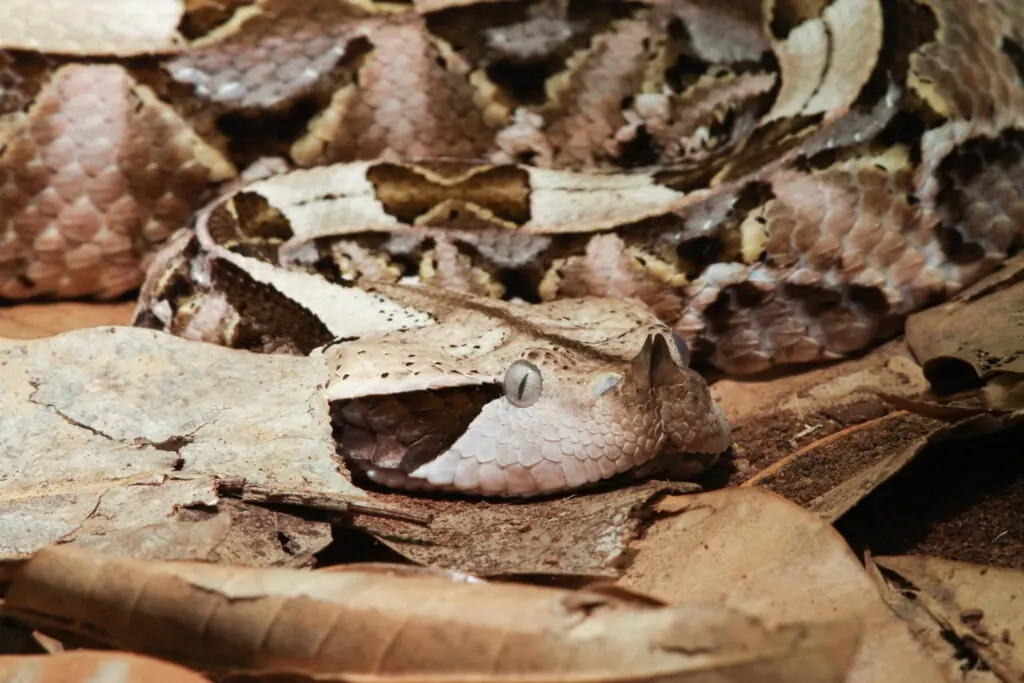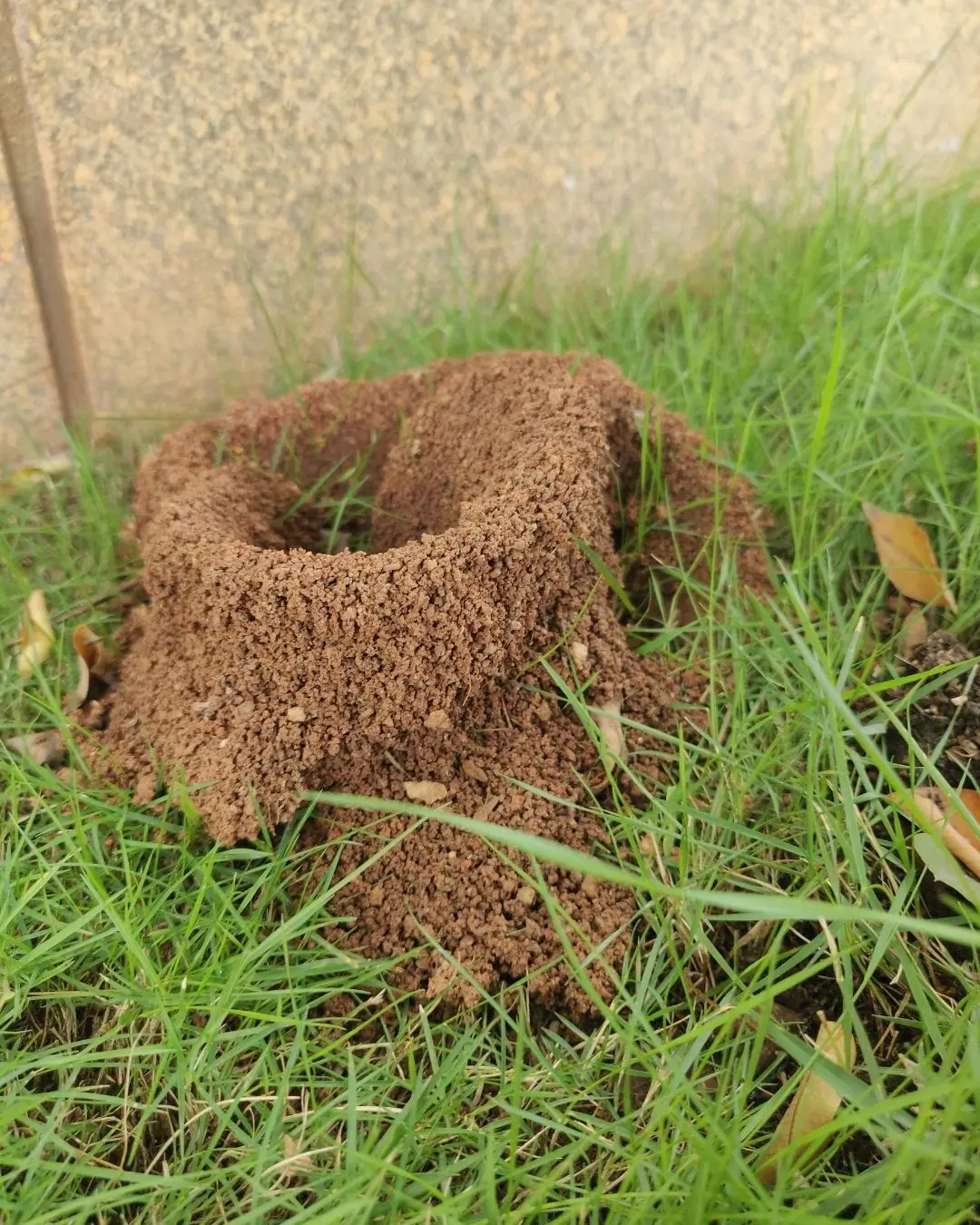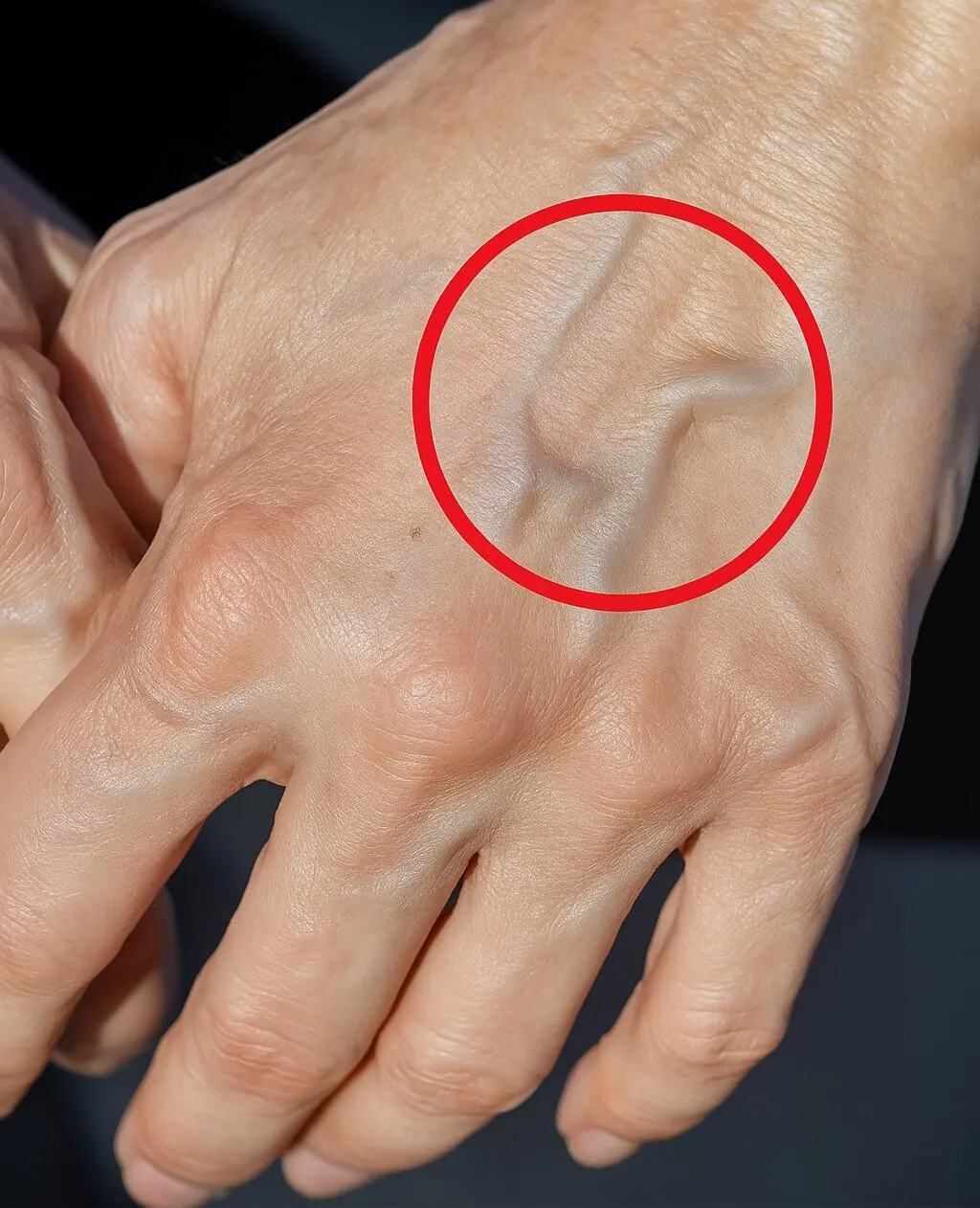
The Mystical Gaboon Viper, Master Of Disguise And Deadly Accuracy

Although I’ve always harbored a somewhat irrational fear of snakes, I consider myself fortunate to live in a place where venomous snakes are rare.
Even so, I find these creatures incredibly intriguing, and my occasional dives into the world of the most dangerous reptiles are a blend of fear and fascination.
The Gaboon Viper is a true marvel of nature, thriving in the dense African rainforests. This remarkable snake captivates with its unique camouflage, potent venom, and remarkable hunting skills.
Let’s dive into the world of this extraordinary creature, uncovering the story behind its incredible traits and why it’s one of Africa's deadliest predators…
The Gaboon Viper, also known as the Gaboon adder, is among the largest and most dangerous snakes native to Africa.
Found in the rainforests and dry savannas of Central and West Africa, this elusive snake is a master of camouflage, blending perfectly with its surroundings.
It’s only surpassed in size by the King Cobra, which can grow up to 6 feet or more and weigh over 20 pounds.
Even more alarming is the fact that the Gaboon Viper has the longest fangs of any venomous snake in the world, reaching lengths of up to 2 inches. Its venom is one of the deadliest in the animal kingdom.
The venom contains a powerful mix of enzymes and toxins capable of destroying tissue, causing excruciating pain, and, if not treated, resulting in death.
Despite its imposing triangular head, it’s the snake’s skin patterns that truly stand out.
So well camouflaged, the Gaboon Viper is nearly impossible to spot among the leaf litter on the forest floor until it strikes.
A patient and methodical ambush predator, this snake waits for its prey to approach before launching an attack.
It feeds on adult rabbits, monkeys, and even the occasional royal antelope.
This impressive predator doesn’t just display its immense appetite, but also its ability to consume large prey. Fortunately, the Gaboon Viper rarely comes into contact with humans.
Bites are infrequently reported, as the snake typically inhabits isolated areas and has a calm nature. However, when bites do occur, they’re often the result of someone inadvertently stepping on the snake.
Without access to anti-venom, such an attack can be fatal.
Unlike other vipers, the Gaboon Viper can retain its grip after biting, allowing it to inject more venom over time. Though it’s primarily native to Africa, some people in the United States keep them as pets.
Because the Gaboon Viper is the largest viper in the world and so visually striking, it has become a popular pet choice for snake enthusiasts.
However, this decision doesn’t always end well, as evidenced by a 2022 incident in Virginia.
A man was bitten by the venomous snake he kept as a pet and rushed to Richmond Hospital’s emergency room. The situation worsened when the anti-venom from the Smithsonian National Zoo was depleted at the VCU Medical Center.
Fortunately, the Virginia Aquarium and Marine Science Center in Virginia Beach stepped in, donating 35 vials of anti-venom to the hospital.
A few months before this incident, a man in North Carolina was also bitten by a Gaboon Viper. In 2022, it seemed like a particularly unfortunate year for Gaboon Viper owners.
The man lost several fingers and required 44 vials of anti-venom.
While there have been reports of Gaboon Vipers escaping into the wild, the chance of encountering one in the U.S. is incredibly rare.
The Georgia Department of Natural Resources reported a sighting in Milledgeville, Georgia, in 2015.
In 2021, The Reptile Report shared a widely circulated video of a Gaboon Viper sighting on the street. People were mesmerized by how the snake seamlessly blended into its environment, resembling a caterpillar as it moved.
The video went viral, and it's easy to see why—this stunning creature is an example of nature’s incredible adaptability. The Gaboon Viper showcases nature’s ability to evolve, thriving in the challenging African rainforests.
The more we learn about its mysterious past, the more we appreciate the delicate balance of strength and beauty that defines the natural world.
Please SHARE this article with family and friends!
News in the same category


This is why you should keep the bathroom light on when sleeping in a hotel
Leaving your hotel bathroom light on at night might seem unnecessary, but it could be a small habit that makes a big difference for your comfort and safety. From preventing nighttime accidents to deterring intruders, experts say this simple tip can protec

If You See Square Waves Forming In The Ocean, Get Out Of The Water Immediately

A Greenland Shark Born in 1620 is Still Alive Four Centuries Later

15 Things You Should Never Plug Into A Power Strip

China is Developing a Levitating Train That Could Travel From New York to Chicago in Just Two Hours

The world’s oldest woman, who lived to 117, ate the same meal every day throughout her life
Emma Martina Luigia Morano, the world’s oldest woman at the time of her passing, credited her extraordinary 117 years of life to a mix of genetics, resilience, and one very peculiar daily diet. Her remarkable story spans two World Wars, personal tragedy

TikTok’s ‘Vabbing’ Trend Sparks Debate: Does It Attract Partners?

In Sweden, You’re Not Allowed to Leave Your Dog Alone for More Than Six Hours, Here’s the Reason

A A tendon raises up when you touch your pinky to your thumbraises up when you touch your pinky to your thumb

The Hidden Meaning Behind Leg-crossing — It’s More Than Just Comfort

The Sh0cking Truth Behind Your Ankle Bracelet And What It Reveals About You — It’s More Than Just Jewelry
For many, an ankle bracelet is just a delicate, eye-catching piece of jewelry. But behind its shimmer lies a rich tapestry of history, tradition, and hidden symbolism that stretches across cultures and centuries.

Lost Underwater City Near Noah’s Ark Site Could Rewrite Biblical History Forever
The discovery of an underwater city found by the 'resting place of Noah's Ark' is a revelation that may lead to the Bible story being re-written.

11 Heartbreaking Yet Essential Signs Your Dog May Be Nearing the End — And How to Give Them Comfort Until the Last Moment
When you notice these signs, your role transforms from caregiver to emotional anchor. This is the time to be fully present — offering touch, reassurance, and unconditional love.

Harvard Professor Warns: Object Heading Toward Earth Could Be Something Beyond Nature
A massive interstellar object, 3I/ATLAS, is racing toward Earth, and one Harvard astrophysicist believes it may not be natural. With missing comet features and a suspicious trajectory, experts are now debating whether it could be an engineered spacecraft.

Mass Panic as ‘New Baba Vanga’ Predicts Majo Disasters Striking in Just One Month
A chilling prophecy from Japan’s so-called “New Baba Vanga” has triggered widespread fear and mass trip cancellations. Tourists are now abandoning travel plans as the forecast warns of a catastrophic natural disaster hitting in early July 2025.

What Is SPAM Meat? History, Origin, Ingredients, and How It Became a Global Food Icon
SPAM — the world-famous canned meat — has been sold over 8 billion times and is loved in more than 40 countries. From its humble beginnings during the Great Depression to its role in World War II, here’s the complete story of SPAM’s origin, ingred

Scientists Reverse Aging of a 53-Year-Old’s Skin Cells to That of a 23

Mom Stepped on an Ant Hill and Died Instantly
News Post

Get Rid of Throat Mucus Faster With These Home Treatments (Evidence Based)

Clear Throat Mucus Fast With These Tried-and-Tested Remedies They Don’t Want You to Know

9 Warning Signs of Magnesium Deficiency You Shouldn't Ignore

Poor Postcancer Surgery Outcomes Tied to 3 Factors

Teamwork Boosts Primary Care Doc Job Satisfaction, Cuts Stress

HIV Was Successfully Eliminated from Human Immune Cells Using CRISPR Gene Editing in Landmark Study

Scientists Discover An “Off Switch” For Cholesterol—And It Could Save Millions Of Lives

How to Treat Urinary Tract Infection (UTI) Naturally According to Science

4 Common Causes of Body Pain on the Right Side

The Truth About Eating the Black Vein in Shrimp Tails

12 Subtle Vitamin D Deficiency Symptoms That Most People Ignore

What Your Heart Experiences When You Drink Energy Drinks

How to Eat Right for Your Blood Type

Eyes Full of Hope, Heart Full of Trust.

When to Worry About Veins That Appear Out of Nowhere

This is what sleeping on the left side does for our brain, stomach & glymphatic health
Sleeping position might be the last thing you think about before bed, but it can have a powerful impact on your health. Experts say that lying on your left side could improve digestion, support brain detox, ease back pain, and even enhance circulation.

I Haven’t Seen My Daughter in 13 Years — Then a Letter Arrived from a Grandson I Never Knew

This is why you should keep the bathroom light on when sleeping in a hotel
Leaving your hotel bathroom light on at night might seem unnecessary, but it could be a small habit that makes a big difference for your comfort and safety. From preventing nighttime accidents to deterring intruders, experts say this simple tip can protec

Wife Left Husband to Raise Their Baby Alone — 20 Years Later, She Reached Out to Their Daughter
